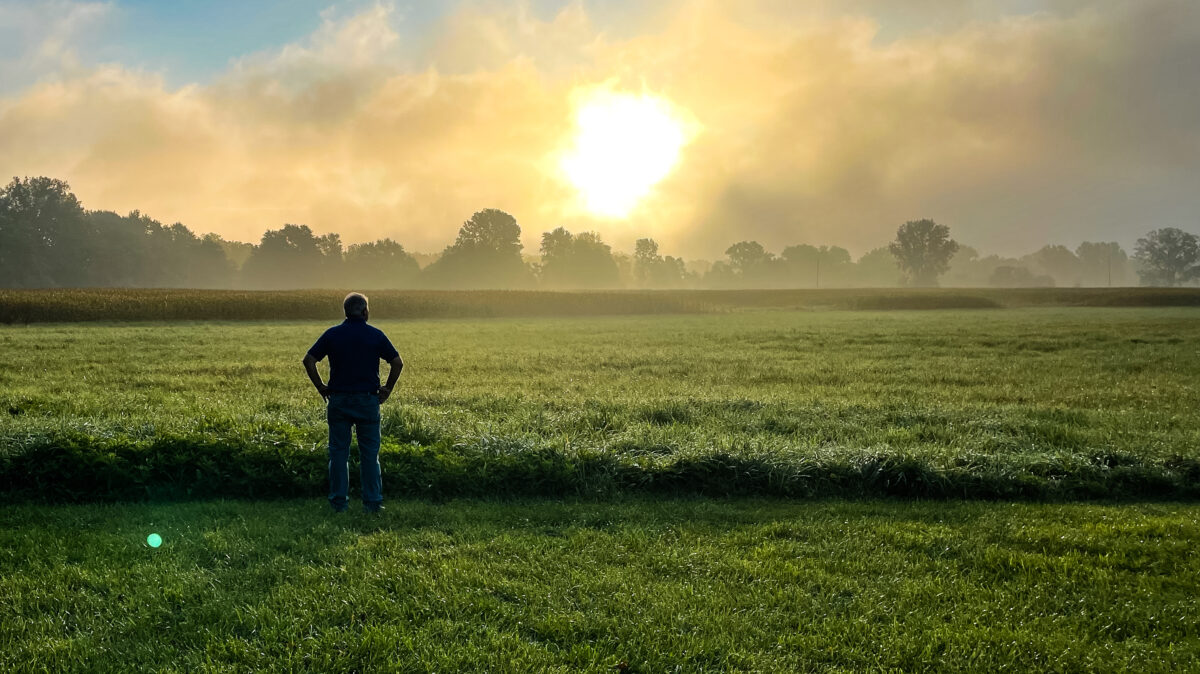Sustainability, Our Farm Legacy in Action
TOPICS
Sustainable EnvironmentZippy Duvall
President

photo credit: AFBF Photo, Morgan Walker
Zippy Duvall
President
Farmers and ranchers are always looking for better, more efficient ways to feed the world. We don’t stop with good enough. Like my dad always told me, “If you take care of the land, it will take care of you.” Those are words all farmers live by.
For generations, we’ve recognized the importance of protecting our resources. Our family farms tell the story of the strides we have made together in reducing our environmental impact and leaving the land better than we found it. For farmers, sustainability is at the heart of all we do in tending to the soil and caring for animals, relying on the sky and land to provide life for our families and neighbors.
We need to own the term, sustainability. It’s not a buzzword for us: it’s a way of life. I would imagine that many Americans aren’t aware of the extent of our current climate-smart farming practices. To us, it’s simply smart farming. That’s part of the reason we formed a new coalition of 21 agricultural groups to share our commitment to sustainability. Farmers for a Sustainable Future stands ready to be a resource about agriculture’s environmental efforts, and to help share your story more broadly.
Smarter farming, new strategies and technology are helping us produce more while lessening the impact on the environment.
A recent Duke University poll showed more than a third of rural voters trust local farmers and ranchers the most about environmental and conservation issues. At Farm Bureau, we do not take that trust for granted. We’re committed to earning the trust of those in urban areas, too. We know there are many questions about how food is produced, how we are protecting natural resources and what we are doing to reduce emissions. We welcome questions and we’ll do our best to answer them.
Smarter farming, new strategies and technology are helping us produce more while lessening the impact on the environment. In fact, over the past 70 years, production of food, feed and fiber has grown 270% while the use of land, energy and fertilizer have remained steady. The numbers prove what we know: we are doing more with less.
The way we grow our crops today is drastically different than just a few decades ago. The use of conservation practices and no-till crops are on the rise. Natural topsoil is being left undisturbed during planting and harvesting, reducing the chances of erosion from rain and wind, and trapping carbon within the earth instead of releasing it into the atmosphere. Choosing the best crop for a region helps conserve water. Varying the types of crops planted in a field increases soil fertility and harvests.
Few people realize that American farmers were among the first environmentalists—that’s a fact we all can, and should, take pride in. More than 140 million acres, 15% of all farmland, is dedicated to conservation and wildlife habitat today. That equals the total land area of California and New York state combined. And that number does not include the millions of acres in state-led conservation practices.
Greenhouse gas emissions, one of the most cited factors in addressing climate change, are trending down in American agriculture. In all, agriculture represents less than 10% of the greenhouse gas emissions in the United States, far eclipsed by cars, electricity production and other industries. Production agriculture is creating less greenhouse gas than just 30 years ago. We’re doing this by using geothermal energy and harnessing the power of the sun and wind. Satellite technology helps farmers plant and harvest crops more efficiently, requiring less fuel and labor. Methane digesters capture and neutralize animal waste, turning it into fuel and fertilizer.
While we’re proud of what we’ve accomplished, we are keeping our eyes on the horizon for ways to keep improving. The demands for agricultural production are not slowing down. The farming and ranching practices we employ today – and the innovations to come – are setting the stage for the next 30 years when the demand for food will increase by 70%. But we need partners—partners in research, innovation and investment to advance practices that reduce emissions and capture carbon. Together we can leave the world a better place for our children and grandchildren. Farmland has always been a living legacy from generation to generation, and farmers are committed to ensuring that tradition of sustainability lives on.
1 https://www.fb.org/files/FFASF_Flyer.pdf
2 https://www.fb.org/files/FFASF_Flyer.pdf
3 https://news.un.org/en/story/2013/12/456912
Zippy Duvall
President
Vincent “Zippy” Duvall, a poultry, cattle and hay producer from Greene County, Georgia, is the 12th president of the American Farm Bureau Federation.
Trending Topics
VIEW ALL